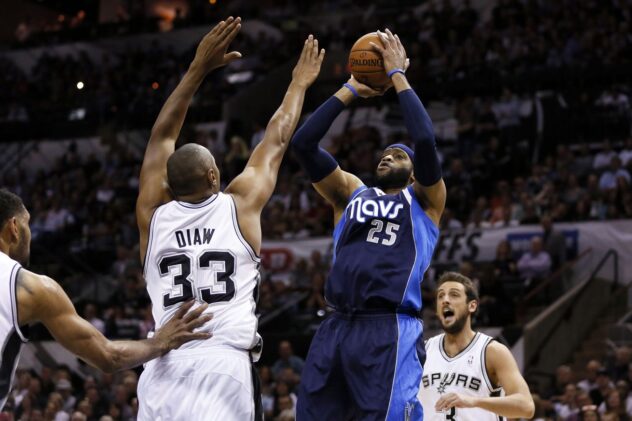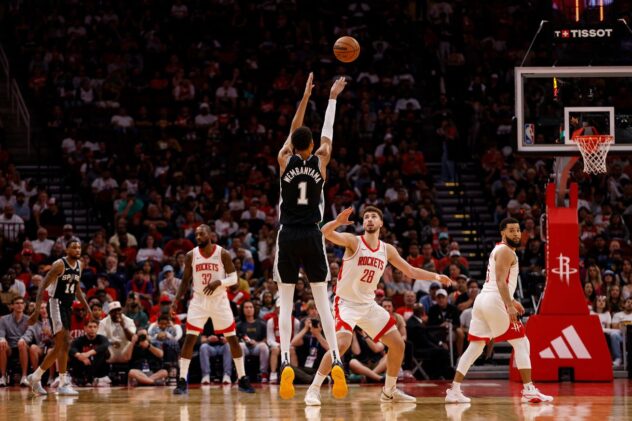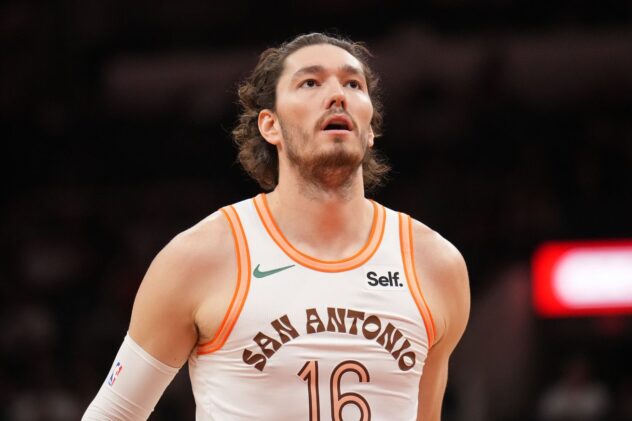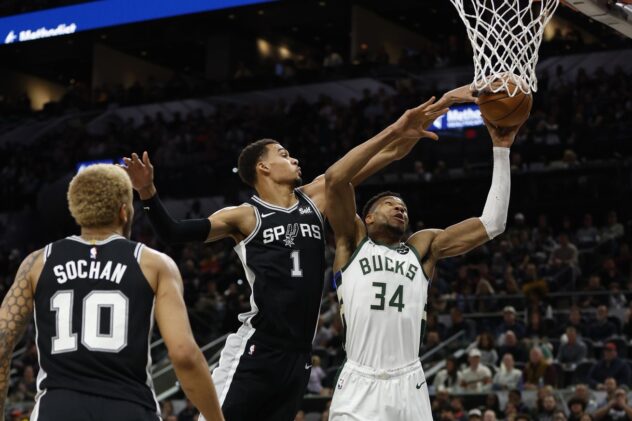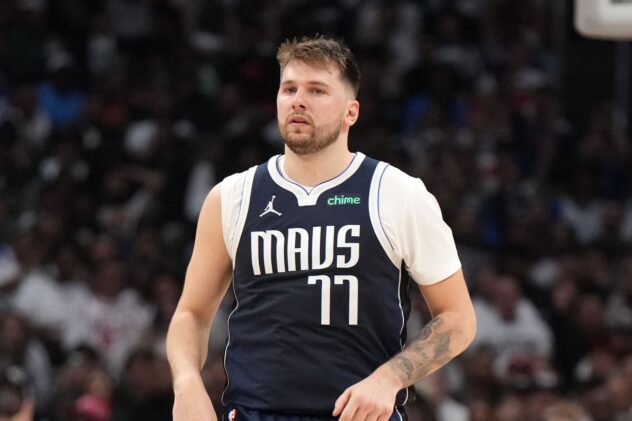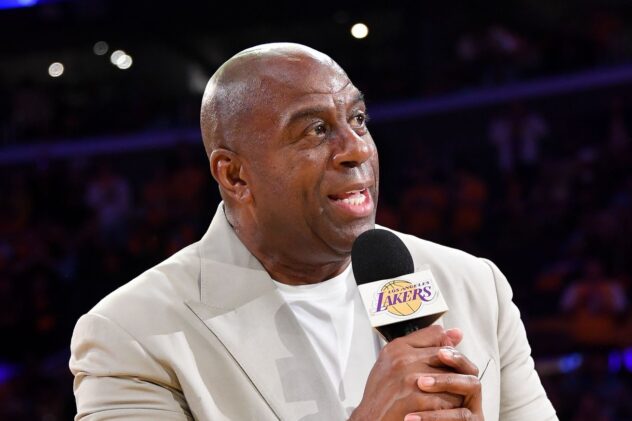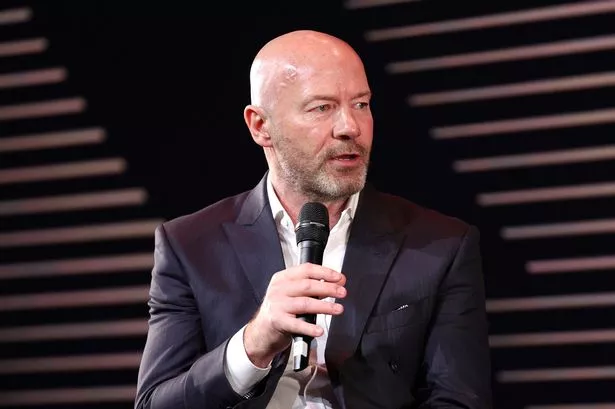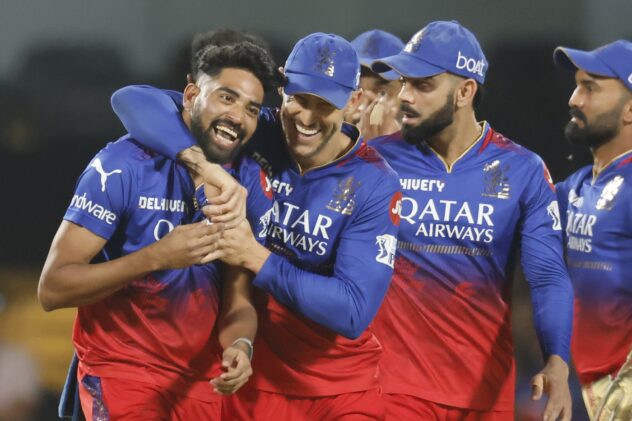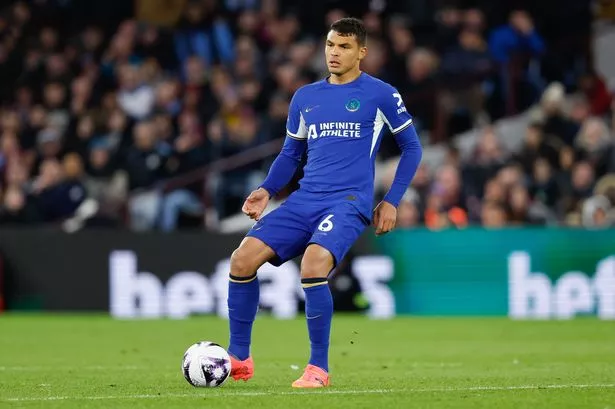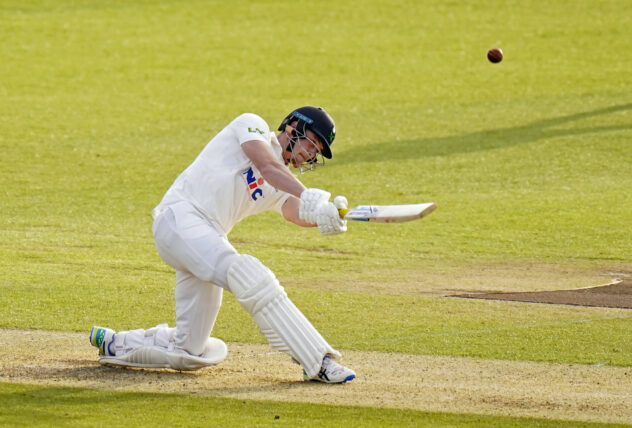Examining the trend of NBA superstars playing fewer minutes
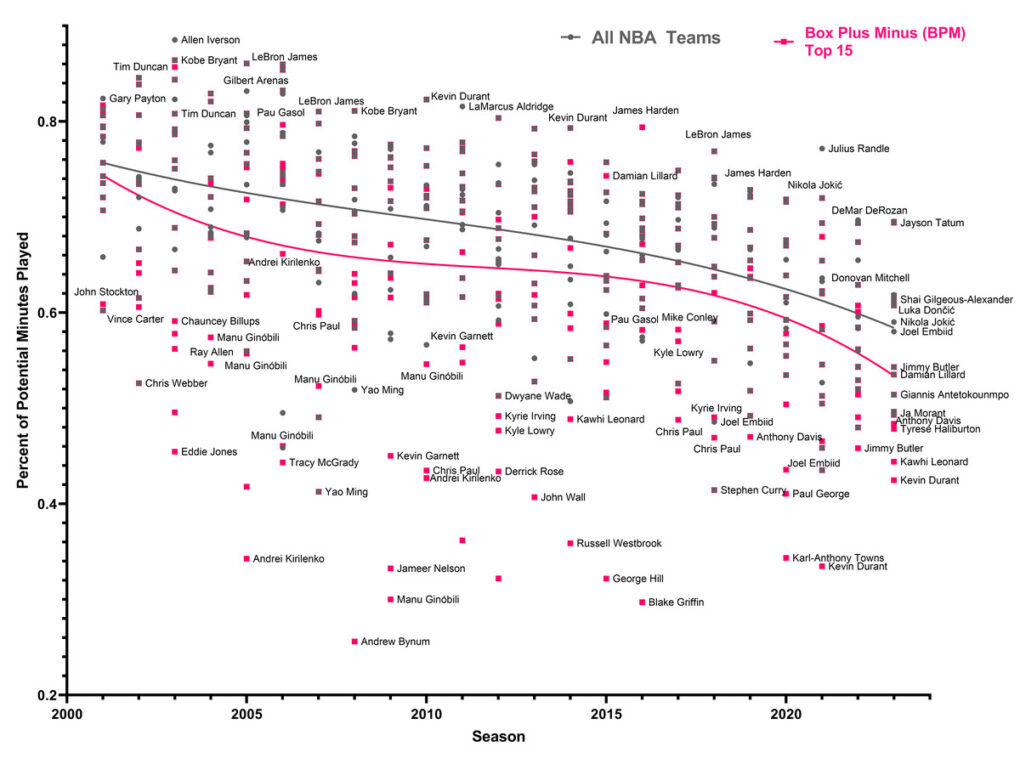
The NBA is a star-driven league. Achieving the status as a title contender is nearly impossible without having at least one top 10 player, even if team performance around that star player is just as important. Not only that, but stars bring a fanbase. To illustrate this, I will share a quick example as a college professor.
Over the last 20 years, I have consistently asked students visiting my office if they follow the NBA and have a favorite team. Interestingly, the answers have changed, but not as you might think. The response hasn’t shifted from one team (eg, the Lakers) to another team (eg, Warriors). Instead, the answers have shifted from identifying a team to naming a player. In fact, these days, I’m always told answers like, “I’m a LeBron (James) fan,” “Steph (Curry) all the way,” or “Dame (Lillard) is my guy.” Regardless of jersey, young NBA fans like their star players.
Unfortunately, I have bad news for these star-gazing pilgrims. Watching the best players in the NBA is MUCH harder these days — because they’re playing less.
Minutes Played by All-NBA Winners
The chart below displays an overlay of two data sets. The grey circles show the percentage of potential minutes played by each member of the All-NBA teams since 2001, and the pink circles display the players in the top 15 Box Plus Minus (BPM)[1 & 2]. The peak of potential minutes played occurred in 2003 when the All-NBA teams averaged 77.4%. This team featured minute totals rarely seen in the current NBA. Allen Iverson played 3,485 minutes (88.5% of potential), which is the most minutes of any to receive the award in the last 23 years. Kobe Bryant played 3301 minutes, Kevin Garnett played 3,321, and Timmy Duncan played 3,181 minutes (3rd highest of his career). As a comparison, James Harden (17-18 season) and Kevin Durant (13-14 season) are the only All-NBA recipients to break the 3,000-minute barrier in the last decade.
Since 2003’s peak of 77.4% (3,047 minutes), there has been a sloping decline in minutes played by those on the All-NBA teams, and that has plateaued at approximately 59.4% (2,337 minutes) in the last three seasons. This drop of 710 minutes is 23.3% off the 2003 peak. Furthermore, averages can be deceptive. For example, 12 of this season’s award winners played fewer minutes than EVERYONE on the 2003 team! (Julius Randle, Domantas Sabonis, and Jayson Tatum pulled the current team up). The average number of games played has also decreased from an astounding/excessive 78 games in 2003 to 66.7 this season (a 13.7% decline).
Minutes Played by top 15 in BPM
Games played have always factored into All-NBA voting — just not officially. I included the top 15 in BPM in this chart for an important reason. Comparing the All-NBA to the BPM data on the chart suggests that games and minutes played factored into the All-NBA voting. The trendline of the highest BPM values for each season never reaches the trendline of All-NBA. Hence, ALL-NBA winners generally played more than those that appeared statistically superior. Furthermore, all the solitary pink squares on the lower half of the chart illustrate this point. The pink squares represent players in the top 15 BPM that didn’t make an All-NBA team that season. Although BPM is not perfect, the number of pink squares near the bottom of the chart does imply there were undoubtedly very effective players that voters likely felt didn’t play enough to earn All-NBA status.
Manu Ginobili is an excellent example of not playing enough minutes for the voters’ consideration. Manu made All-NBA teams in 2008 and 2011 (not coincidentally, his two highest seasons for total minutes played). But Manu made the top 15 in BPM for 8 consecutive seasons! (2004–2011 — an AMAZING statistic).
The Owners Didn’t Like the Trend.
Regardless of All-NBA, statistically elite, or both, the trendlines slope downward, and it appears the owners did not like it. Hence, on April 1st, Shams Charania tweeted that the NBA was initiating a rule in the newest CBA requiring a minimum of 65 games played to be eligible to make an All-NBA team. I’ve encountered multiple strong arguments for and against this new rule, and, frankly, I’m still undecided about where I stand. I do have several key thoughts I would like to outline in the hopes of fostering a discussion.
- For years, NBA Players have participated in too many games and played too many minutes. Three hundred fifty-five players have played over 3,000 minutes since 1990, but the last time anyone did that was LeBron in the 2017-18 season. In addition, only eleven have met this mark in the most recent ten 82-game seasons (Durant three times and LeBron twice). This is the correct path. The game is faster, offensive sets start earlier in possessions, and defensive rotations to contest outside shooters have changed the volume of activity required to be defensively effective. Moreover, the average NBA team played ~13 back-to-backs last season: Back-to-backs are moronic and a blatant money grab by the league. I’m comfortable with players sitting out one of the two games.
- Many key players did not play 65 games this year. I think this is unhealthy for the league, but I’m not sure the 65-game minimum is the answer. Here is a list of key players that didn’t play 65 games this season: Jimmy Butler (64), Giannis Antetokounmpo (63), Steph Curry (56), Kevin Durant (47), Anthony Davis (56), James Harden (58), Devin Booker (53), Kyrie Irving (60), and Ja Morant (61)
Will the new rules induce change?
I’m undecided on whether the new 65-game minimum for All-NBA and major awards will affect the number of games key stars play. I assume there will be a slight bump, but the aged stars will still strive to stay spry for the playoffs. I feel that a long-term effect will be a reduction in the number of late-career All-NBA Teams players make. For example, LeBron made 3rd team All-NBA this season but would not have qualified under the new rule, considering he only played in 55 games. Furthermore, adjusting for the pandemic, King James would not have qualified in four of his last five seasons, and instead of making All-NBA 19 times, his count would be 15 (still astounding).
One More Thing…
For fun, I wanted to peek at the 15 lowest percent of potential minute totals to have made All-NBA in the last decade. The lowest goes to Stephen Curry’s 2018 season in which he missed 31 games and played 41.4% of the potential minutes. Several fantastic players are repeated on this list: Joel Embiid (2), Kawhi Leonard (2), Curry (2) and LeBron (3).
:no_upscale()/cdn.vox-cdn.com/uploads/chorus_asset/file/24721526/Lowest_percent_minutes_play_for_all_nba.PNG)
Very Interesting. TONY PARKER is the ONLY person on this list who still managed to meet the new minimum game standard. Parker played 68 games in the 2014 title year, and that was his first non-rookie season to average less than 30 mpg (29.4). Times have certainly changed, and until the league either lessens the number of games player (many agree that 70 regular season games would be plenty) and/or finds a way to eliminate back-to-backs, this trend will likely continue.
[1] Percent of Potential Minutes Played = minutes played by athlete / (82 games x 48 minutes). Unless season was altered by strike or pandemic
[2] For reference, across the entire NBA, the median potential minutes played for those starting at least 60 games this season was approximately 58%.

